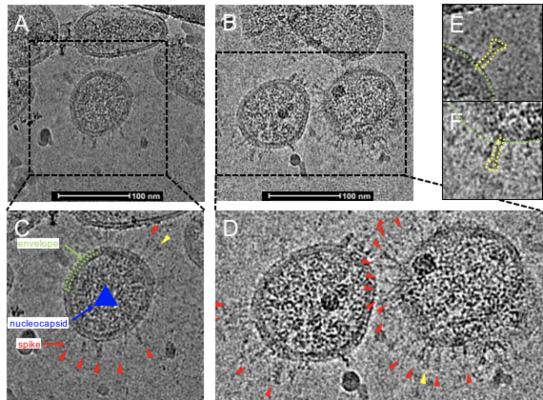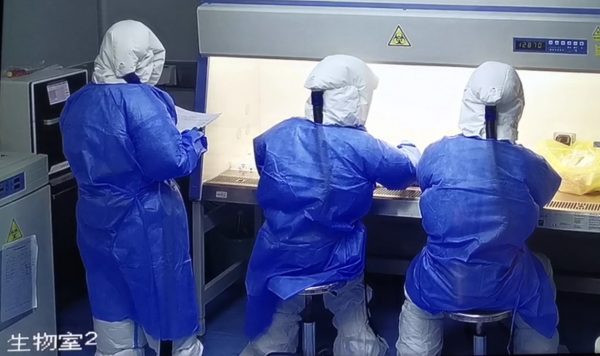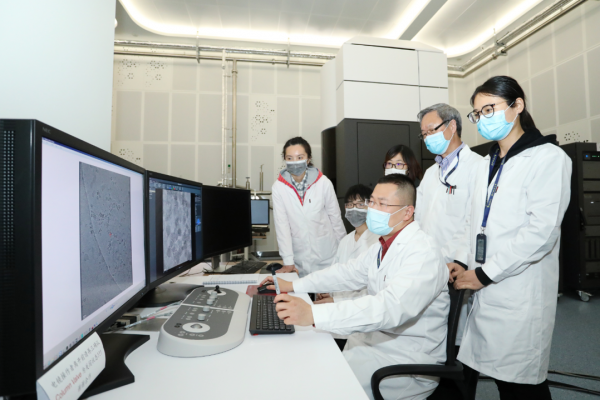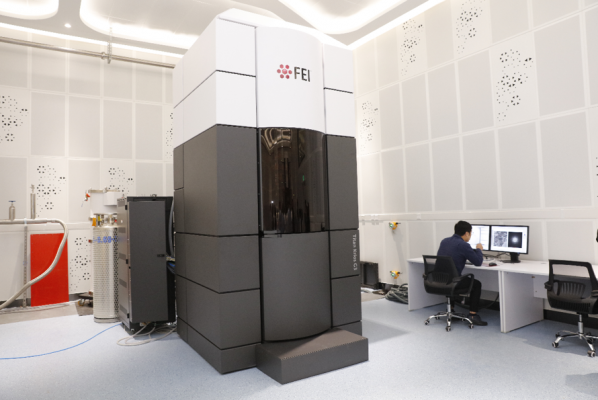A Shenzhen-based joint research team has made a significant breakthrough in revealing the viral architecture of the SARS-CoV-2 with post-fusion spikes by using cryo-electron microscopy.
Since December 2019, the Coronavirus disease 2019 (COVID-19) has caused more than 87,000 infections and over 3,000 deaths around the world.
As part of a global effort to fight against COVID-19, the study provides important information for the identification and relevant clinical research of this new coronavirus.
This result was published in one of the largest life sciences preprint servers, BioRxiv, on March 5, 2020. The joint team is led by the National Clinical Research Center for Infectious Disease, based at Shenzhen Third People’s Hospital, and Southern University of Science and Technology (SUSTech).
The team completed the virus’s isolation, amplification, and purification in the Biosafety Level 3 (BSL-3) laboratory of Shenzhen Third People’s Hospital. They isolated the virus from the bronchoalveolar lavage fluid (BALF) of the patient with COVID-19 on January 27, 2020.

They then completed genome sequencing and identification before registering the strain. The researchers conducted several tests to verify and confirm the inactivation of this strain of the novel coronavirus. After verifications, purified samples were then observed with a transmission electron microscope at the SUSTech Cryo-EM Centre.

The observations of the near-native SARS-CoV-2 virions revealed a special state of coronavirus, in which virions are fusing with the host cell. It is the first time to capture this intermediate state of near-native SARS-CoV-2 using cryo-TEM.
Following a literature review, they found this is the first time that researchers have seen the morphology of the coronavirus under its native state using cryo-electron microscopy after the outbreak of the novel coronavirus (COVID-19).

The joint research team is continuing their research into the novel coronavirus by assessing the viral structure, pathology, and treatment.
At the same time, the joint team is creating a high-level clinical cryo-electron microscopy research platform with the strong support of the Shenzhen municipal government. It will promote research into the identification of the nanostructure of novel coronaviruses and other infectious diseases.
The platform will also seek to provide the scientific basis for pathogen identification of infectious diseases and the prevention & control of public health emergencies. It will also work to develop potential antibodies, vaccines, and medicines for diseases.

Background
Cryogenic electron microscopy (cryo-EM) is an electron microscopy technique applied to samples cooled to cryogenic temperatures and embedded in an environment of vitreous ice. It can observe biological samples such as proteins and viruses that are rapidly frozen to minus 196 degrees. The technology has been applied to many areas such as virus identification, disease diagnosis, drug development, precision medicine, brain science research, new materials, new agriculture, marine biology, etc.
The SUSTech Cryo-EM Center is one of the major public research platforms on campus. It provides technical and scientific support to scientists around the world. In 2019, it collaborated with teams at world-class institutions such as Tsinghua University and the Chinese Academy of Sciences (CAS). Research outcomes have been published in high-impact academic journals, including Science, Nature Microbiology.
On completion, the Center will be the largest and most advanced cryo-electron microscope laboratory in China. It will play a significant role in supporting the research on and off the campus. The Center promotes the research and industrial transformation of Guangdong, Hong Kong, and Macau Greater Bay Area in areas such as biomedicine, precision medicine, new energy, and new materials.
Article link: https://www.biorxiv.org/content/10.1101/2020.03.02.972927v1
Proofread ByXia Yingying, Chris Edwards
Photo BySchool of Medicine, Qiu Yan